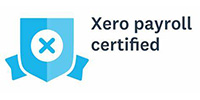A shake-up to the tax rules makes this a key moment for pension planning. What does it mean for you?
This Briefing will help you take stock - whether you’re reviewing your own investment options for the future; a business owner looking for tax-efficient remuneration strategies; or an employer looking to signpost staff to advice.
Pensions basics
Pension contributions are one of the most tax-efficient ways to save. They benefit from tax relief at your marginal rate of tax, with investment income and capital gains accruing in the scheme largely free of tax. UK residents, aged under 75, can make contributions to registered pension schemes and get tax relief on the higher of £3,600 (gross) or 100% of earnings in any given tax year, subject to certain limits (below).
For tax-efficient remuneration, directors of family companies should consider the advantages of the company making employer pension contributions. If a spouse is employed, the company can also make reasonable contributions on their behalf. Provided that the overall remuneration package is justifiable, the company should be able to claim tax relief on such contributions.
Tip: investing in a pension impacts your overall tax position
Pension contributions can be good tax planning tools because of the way they mesh with other tax provisions. The interaction with the rules on tapering of the personal allowance is a good example. The taper applies if income is more than £100,000: but pension contributions may limit the impact of this.
Different types of scheme
There are two main types of pension scheme: personal pension schemes – usually used by the self-employed to make pension provision; and occupational (workplace) pension schemes.
Occupational schemes basically divide into two categories: defined benefit schemes (sometimes called final salary schemes); and defined contribution (sometimes called
money purchase) schemes. Defined benefit schemes can be particularly generous, with retirement income linked to earnings and time worked. Money purchase schemes, on the other hand, pay out in relation to the amount invested and investment performance over the years. Thanks to the government’s pensions auto-enrolment initiative, all employers are now required to provide a workplace pension scheme. The majority of these are money purchase schemes.
How tax relief is given For the self-employed, payments into personal pension schemes are paid net of basic rate tax - what’s called relief at source. The pension provider then recovers the basic rate tax from HMRC. For employees, contributions to occupational schemes are usually deducted from salary before tax is calculated. This is known as a net pay arrangement, and means tax relief is given automatically. Relief at source arrangements may, however, also be used for employees.
Tip: don’t miss out with relief at source
For higher and additional rate tax relief, and the Scottish equivalents, relief isn’t given automatically, and many taxpayers lose out here each year. Relief has to be claimed from HMRC, and can be given via adjustment to the tax code or self assessment. The same applies for additional voluntary contributions made to an occupational scheme. If not in self assessment, contact HMRC to set the process in motion.
Salary sacrifice arrangements for pensions can bring major benefits. The employee gives up the right to part of their salary in return for pension provision: the employer makes a gross contribution to the pension provider, and the employee’s gross salary is reduced accordingly. The employee gets full income tax relief through PAYE, and there is no National Insurance charge for employer or employee.
Otherwise, points to remember are that employer pension contributions are an exempt benefit for the employee. A deduction from profits is normally available for the employer.
Contributing and getting relief
There have been two main brakes on how much someone can invest in their pensions each year, and over their lifetime, and still get tax relief: the Annual Allowance and Lifetime Allowance. Spring Budget 2023 announced significant changes to both.
The Annual Allowance (AA) is the maximum amount of pension savings with tax relief that can be made each year without attracting a tax charge clawing back some of the relief. The limit applies to the total of all personal, employer and employee contributions.
- At 6 April 2023, the AA increased to £60,000 from £40,000. If contributions are more than the AA, they are potentially charged to tax on the individual as their top slice of income.
The good news is that if you don’t use all your AA in one tax year, it can be carried forward and used for up to another three tax years. This continues to be the case.
Tapered Annual Allowance High earners, with income above particular levels are subject to a tapered AA, and here the position can be complex. The taper applies where adjusted income (broadly net income plus employer pension input) is more than a particular limit: and threshold income (broadly net income less pension contributions) is more than £200,000.
- From 6 April 2023, the adjusted income limit increased to £260,000 (from £240,000). For every £2 of adjusted income above £260,000, the AA is tapered by £1, until it reaches a specified minimum.
- From 6 April 2023, the minimum taper becomes £10,000, rather than £4,000.
The Money Purchase Annual Allowance (MPAA) is a lower AA, applying where someone has flexibly accessed a defined contribution pension and continues to make contributions. It is designed to prevent pensions savings being recycled, potentially attracting tax relief more than once.
- From 6 April 2023, the MPAA increases to £10,000 from £4,000.
The Lifetime Allowance (LTA) has limited the total that could be built up in pension savings with tax relief. Until 5 April 2023, it was £1,073,100, in most cases. Until the Budget changes, where the value of the funds exceeded the LTA, a tax charge applied. It was triggered on first accessing pension benefits; reaching age 75; and in some other circumstances. ‘Excess’ amounts taken as a lump sum were taxed at 55%; ‘excess’ amounts left in the fund at 25%; and further withdrawals at the individual’s marginal rate of tax.
A higher LTA may have applied where there was LTA protection. The area is complex, but in overview, additional pension contributions have had the potential to jeopardise such protection.
- From 6 April 2023, the LTA charge has been abolished. Further legislation is being implemented from April 2024 to abolish the LTA itself.
- Excess lump sums above the LTA will be taxed at the individual’s marginal rate of income tax (rather than a 55% tax charge). This also applies for other lump sums, such as the serious ill-health lump sum.
- Rules change for the tax-free Pension Commencement Lump Sum (PCLS). From 6 April 2023, this is capped at £268,275 (25% of the LTA), except where previous protections apply.
Planning with the new rules
In the government’s words: ‘The changes to pensions tax relief limits are intended to persuade those currently considering retirement to remain in employment, and to encourage those who have already left the workforce to return.’
The Budget put a particular emphasis on workers over 50 and high earners like NHS clinicians. Certainly, these changes bring a new perspective for higher earners wanting to invest more into a pension, or those with provision already more than the LTA. Those with LTA protection may now be able to make further pension contributions without prejudicing their position. But in each case, bespoke tax and pensions advice is essential.
There are, though, repercussions for many other taxpayers. In many cases, the new AA and taper limits are worth looking at, with a view to making increased contributions. The new MPAA is also a potential game-changer. It allows someone to begin to access a pension, whilst continuing to work and still add to their pension fund. It makes it easier to think about partial retirement: and also means deciding when to make the change. Should it be as soon as possible? This currently means at
age 55 (see below). Or should it be later - and if so, when? Professional advice specific to your circumstances is necessary for all these decisions.
It should be noted, too, that the rules are still evolving. There are uncertainties over some details, for example, the income tax position of beneficiaries of a pension inherited where someone dies before the age of 75. Most notably, however, the removal of the LTA charge was particularly controversial, and a future Labour government may reinstate it.
Drawing on Pension Benefits
Benefits can be drawn from age 55. This is what’s called normal minimum pension age. It is, however, changing, and becomes 57 from 6 April 2028. Note that this is considerably lower than State Pension age (below). Current options at age 55 include:
- taking a tax-free lump sum of 25% of fund value (to a maximum of £268,275)
- buying an annuity with the remaining fund
- income drawdown.
The money received from the annuity each year forms part of your taxable income for the year, as do any monies received from income drawdown.
State pension
Entitlement to the State Pension depends on the National Insurance record. There are different levels of payment, depending on when someone reaches State Pension age. Basic State Pension rules apply if you reached State Pension age before 6 April 2016: the ‘new State Pension’ applies after this. State pension is taxable.
The State Pension can be drawn from the official State Pension age: currently 66. The age is going up, rising to 67, for those born after April 1960, by the end of 2028. It is set to rise to 68 after this. Gov.uk offers an online tool for people to check the age that will apply to them. There is no necessity to take the State Pension as soon as you become entitled to it. If you’re still working, you may want to defer payment, meaning payments will be higher when eventually taken.
A State Pension forecast can be obtained by applying on gov.uk, by post, or phoning the Future Pension Centre. Employers may want to signpost staff in this direction. Where a forecast shows gaps in the contributions record, there could be the chance to make voluntary National Insurance contributions to put it right. This can usually be done for the past six years.
Tip: extended window
There is an extended window to make voluntary contributions for the tax years from April 2006 to April 2017 - something employers may want to flag up to staff. The deadline for these contributions is now 5 April 2025. It is particularly relevant to men born after 5 April 1951, and women born after 5 April 1953. Note, however, that voluntary contributions don’t always increase the State Pension: the position should be checked on an individual basis.
Planning for your future
Investment advice is a regulated area: and any decision on pensions is always best taken alongside a discussion of your tax position. We should be delighted to help you review the options.










